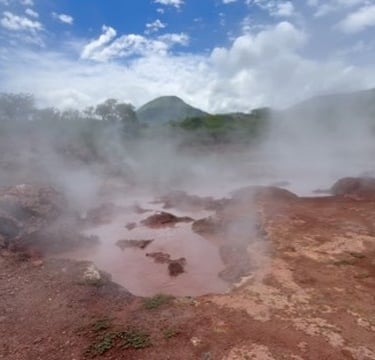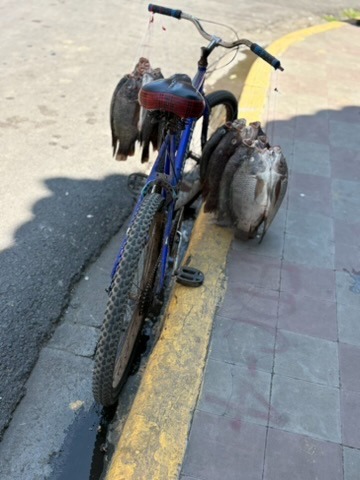A Week in Nicaragua: What We Saw, Loved, and Would Do Differently
"It is better to die with your people, than to live as a slave." Augusto Cesar Sandino
9/24/202511 min read

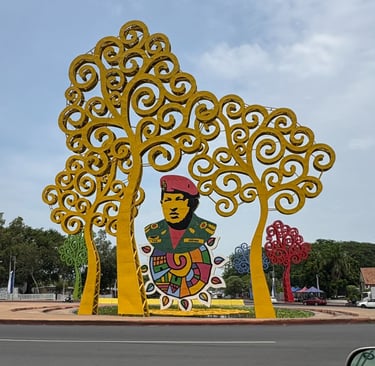
Nicaragua is the largest country in Central America, yet still feels under the radar compared to its neighbors. It’s home to more than 19 volcanoes (seven of them active), plus Central America’s largest lake, Lake Nicaragua, and its largest volcano, Momotombo. Its history is complex, shaped by Spanish colonization, independence struggles, and a long, complicated relationship with the United States. Today, it’s a country that welcomes travelers with raw beauty, warm people, and a slower pace of life.
For our time in Managua and beyond, we used Nico Paradise Tours (website: nicaparadisetours.com) for all our tours and day trips. They were professional, safe, and flexible. If you’d like help contacting them, reach out—we’d be happy to connect you directly with their team.
Day 1: Private Capital City Walking Tour – Managua
Our first day was a private walking tour of Managua that lasted about 3–4 hours. It gave us a feel for the city and its mix of history and modern life.
Roberto Huembes Market: Bustling, colorful, and very local. Stalls overflow with produce, crafts, and daily necessities.
New Cathedral of Managua: Built in a brutalist style, it stands in stark contrast to traditional cathedrals. Its most striking story is the giant cross at the altar—burned after a Molotov cocktail was thrown by a terrorist in the 1990s.
Loma de Tiscapa: For just $1 per person, you can take in sweeping city views. There’s also a memorial with a mural of Sandinista leader Augusto César Sandino stepping on the American flag, plus a small tank gifted by Mussolini—reminders of Nicaragua’s turbulent past.
Avenida Bolívar: Lined with colorful light trees and political roundabouts, including one dedicated to Venezuelan leader Hugo Chávez.
National Palace (exterior only): A glimpse at the once-grand seat of power.
Old Cathedral of Managua: Severely damaged in the 1972 earthquake and never rebuilt, it remains a haunting but beautiful landmark.
Old Managua and Puerto Salvador Allende: A lakeside promenade with restaurants and small amusement areas—pleasant for a stroll.
We recommend this city tour through Nico Paradise Tours, especially with our guide Anthony, who made the history come alive.
Day 2: Leon and Surroundings
This was a long day, mainly because Nicaragua’s maximum speed limit is 50 km/h—even on highways. While the sites were interesting, for the time and cost, we wouldn’t recommend this if you’re short on time or budget.
Ruinas de León Viejo: For $10 USD per person, you can explore one of the oldest colonial settlements in the Americas, destroyed by volcanic eruptions in the 1600s. The on-site guide speaks only Spanish, and the midday heat is intense, so be prepared.
Hervideros de San Jacinto:
The highlight of the day. This geothermal field lets you feel the “earth breathe.” The local family who guides you around their backyard is friendly and welcoming.
Puerto Momotombo & Piedras Azules Lookout: Scenic, but not as memorable as other stops.
León City and Main Square: The square itself felt underwhelming, but the cathedral is stunning. For a small fee, you can climb to the roof and enjoy views of the city framed by volcanoes.
Museo de Arte Fundación Ortiz-Gurdián: Included in the tour, but we were too tired to go in.
Day 3: Granada, Masaya, and Surroundings
This full-day tour (9 AM–6 PM) was the highlight of our trip, and we highly recommend it.
Granada City: Colorful, colonial architecture and a walkable charm similar to Antigua, Guatemala.
Isletas de Granada: A relaxing boat tour through the tiny islands on Lake Nicaragua.
Handicraft Market in Masaya: Great for souvenirs and handmade items.
Mirador de Catarina: A beautiful viewpoint overlooking Lake Nicaragua and surrounding volcanoes. On a clear day, you can see for miles.
Masaya Volcano: Absolutely spectacular. Visit in the evening as the park opens at 6 PM to view the glowing lava. The entrance fee is $10 per person, paid directly at the gate.
San Pablo Fortress: A small but interesting historic stop.
This private tour included an English-speaking guide, SUV transport, boat tour, and entrance fees (except the Masaya Volcano fee).
For the remainder of our time in Nicaragua, we stayed in Managua and tried to take in the city like locals. Eating at local restaurants, visiting their mall, and relaxing by the pool.
Where We Stayed
Western hotel options are limited in Nicaragua. We stayed at the Hilton Princess Managua. While it doesn’t meet typical Hilton five-star standards, it was clean, safe, and the staff was wonderfully friendly. Another solid option is the Intercontinental.
Getting Around
Nicaragua does not have Uber. Instead, locals use inDrive, an app where you negotiate the price with the driver beforehand and then pay in cash. It works, but you’ll want to know some Spanish to use it smoothly.
Dining in Managua
We enjoyed local cuisine at Los Ranchos and Cocina de Doña Haydée. Their carne asada is excellent, and meals usually include plantains, rice, and black beans. Compared to Guatemala or Mexico, Nicaraguan food is simpler but filling and flavorful.
Future Plans: Granada and the Coast
If we return to Nicaragua, we’d plan to stay a couple of nights in Granada—it’s walkable, historic, and more relaxed than Managua. We’d also head to the Pacific coast, especially Playa Maderas, a laid-back surf town near San Juan del Sur. It’s known for great waves, beach bars, yoga retreats, and a friendly backpacker vibe. Perfect for combining beach time with a bit of adventure.
Tips for Nicaragua
1. Speak Spanish—outside of tour guides, English is not common.
2. Use inDrive instead of looking for taxis. Negotiate and pay cash.
3. Propina (tips) are usually included in restaurant bills.
4. Plantains, rice, and beans are staples—don’t expect the same flavors as Mexico.
5. It’s hot. Really hot. Bring water, sunscreen, and a hat.
6. Managua is not a walkable city. If you want that experience, head to Granada or León.
7. Make sure to research the entry requirements. Since we were arriving from Guatemala, we had to get a Yellow Fever Vaccine.
Final Thoughts
Nicaragua isn’t the easiest destination, but it’s rewarding. Between its volcanoes, colorful colonial towns, and the warmth of its people, it’s a place we’re glad we explored. If you’re thinking about planning your own Nicaraguan adventure, reach out to us at Tacks Travels. We’d love to help you design a safe, memorable, and authentic trip—just like ours.
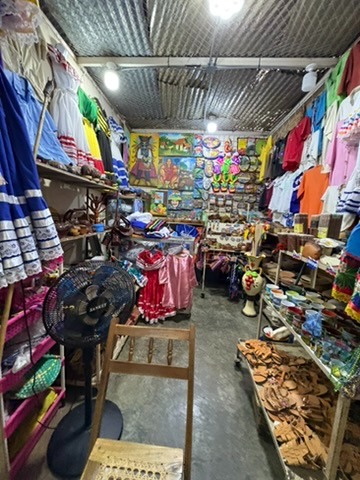

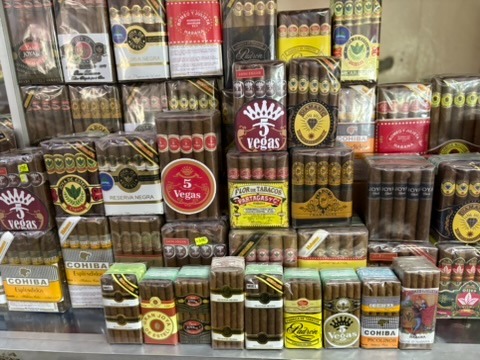

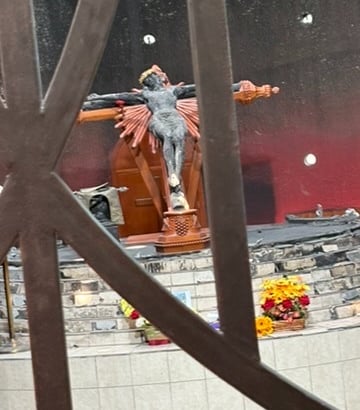

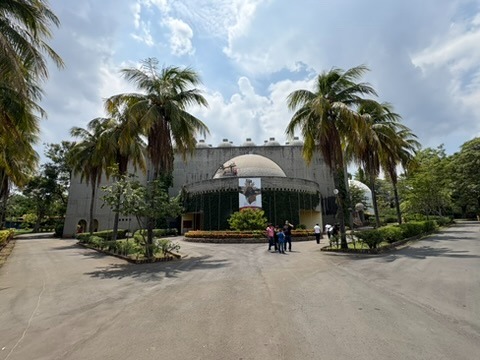

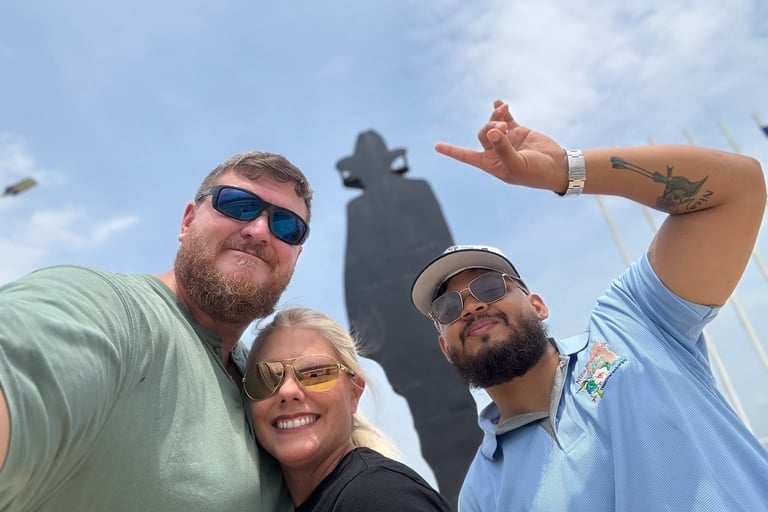

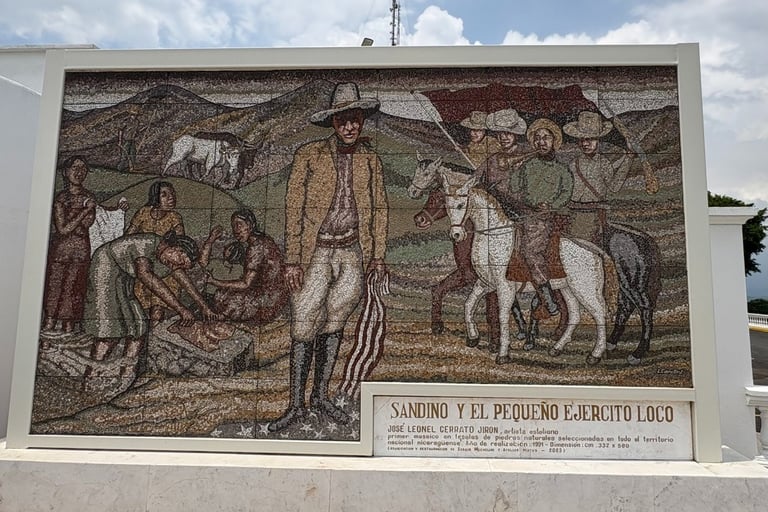

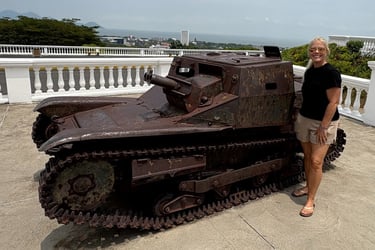

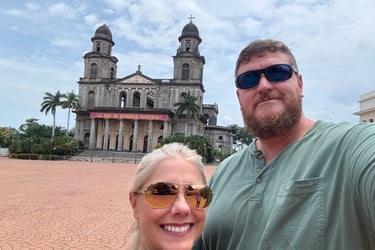

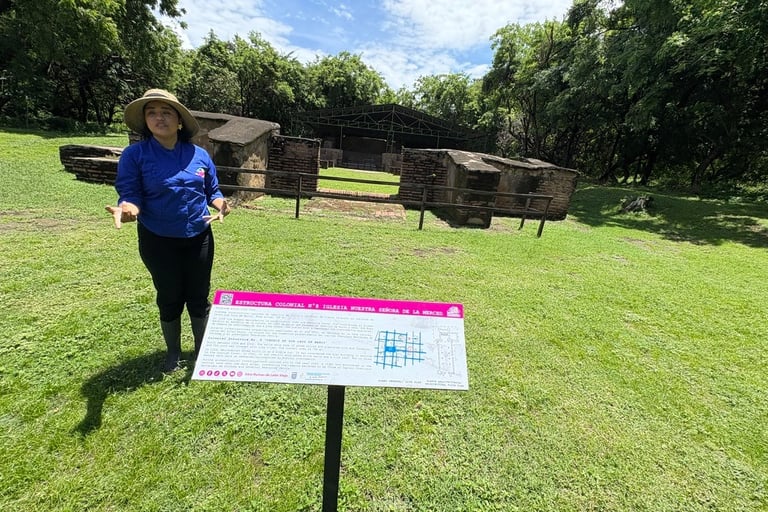

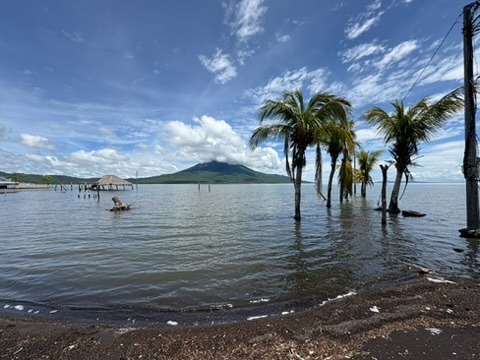







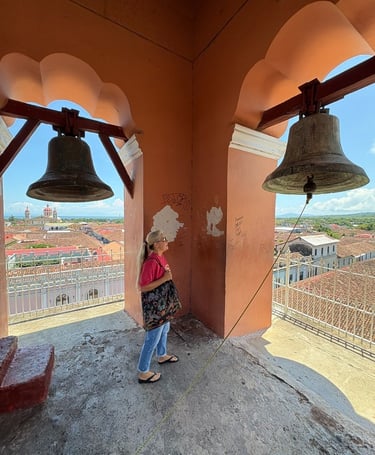


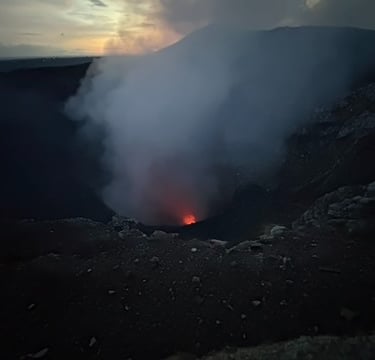



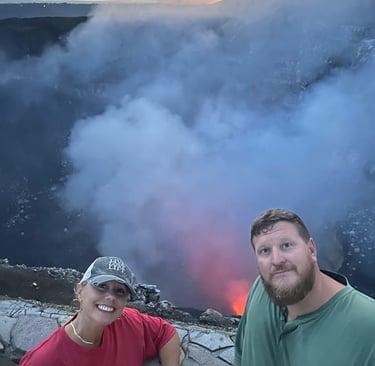
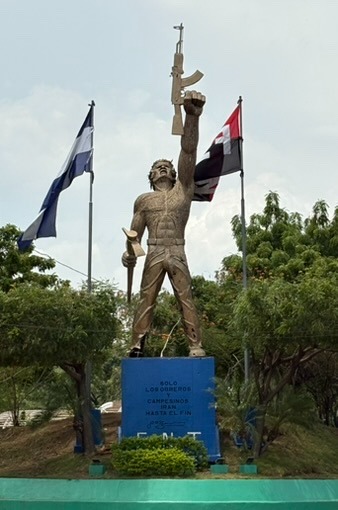


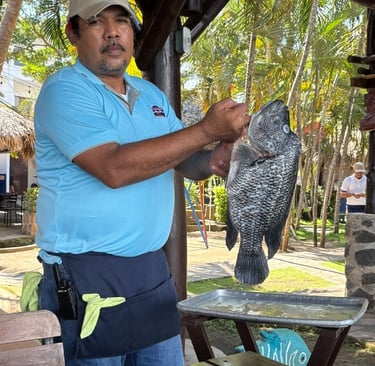


Nicaragua is the largest country in Central America, yet still feels under the radar compared to its neighbors. It’s home to more than 19 volcanoes (seven of them active), plus Central America’s largest lake, Lake Nicaragua, and its largest volcano, Momotombo. Its history is complex, shaped by Spanish colonization, independence struggles, and a long, complicated relationship with the United States. Today, it’s a country that welcomes travelers with raw beauty, warm people, and a slower pace of life.
For our time in Managua and beyond, we used Nico Paradise Tours (website: nicaparadisetours.com) for all our tours and day trips. They were professional, safe, and flexible. If you’d like help contacting them, reach out—we’d be happy to connect you directly with their team.
Day 1: Private Capital City Walking Tour – Managua
Our first day was a private walking tour of Managua that lasted about 3–4 hours. It gave us a feel for the city and its mix of history and modern life.
Roberto Huembes Market: Bustling, colorful, and very local. Stalls overflow with produce, crafts, and daily necessities.
New Cathedral of Managua: Built in a brutalist style, it stands in stark contrast to traditional cathedrals. Its most striking story is the giant cross at the altar—burned after a Molotov cocktail was thrown by a terrorist in the 1990s.
Loma de Tiscapa: For just $1 per person, you can take in sweeping city views. There’s also a memorial with a mural of Sandinista leader Augusto César Sandino stepping on the American flag, plus a small tank gifted by Mussolini—reminders of Nicaragua’s turbulent past.
Avenida Bolívar: Lined with colorful light trees and political roundabouts, including one dedicated to Venezuelan leader Hugo Chávez.
National Palace (exterior only): A glimpse at the once-grand seat of power.
Old Cathedral of Managua: Severely damaged in the 1972 earthquake and never rebuilt, it remains a haunting but beautiful landmark.
Old Managua and Puerto Salvador Allende: A lakeside promenade with restaurants and small amusement areas—pleasant for a stroll.
We recommend this city tour through Nico Paradise Tours, especially with our guide Anthony, who made the history come alive.
Day 2: Leon and Surroundings
This was a long day, mainly because Nicaragua’s maximum speed limit is 50 km/h—even on highways. While the sites were interesting, for the time and cost, we wouldn’t recommend this if you’re short on time or budget.
Ruinas de León Viejo: For $10 USD per person, you can explore one of the oldest colonial settlements in the Americas, destroyed by volcanic eruptions in the 1600s. The on-site guide speaks only Spanish, and the midday heat is intense, so be prepared.
Hervideros de San Jacinto:
The highlight of the day. This geothermal field lets you feel the “earth breathe.” The local family who guides you around their backyard is friendly and welcoming.
Puerto Momotombo & Piedras Azules Lookout: Scenic, but not as memorable as other stops.
León City and Main Square: The square itself felt underwhelming, but the cathedral is stunning. For a small fee, you can climb to the roof and enjoy views of the city framed by volcanoes.
Museo de Arte Fundación Ortiz-Gurdián: Included in the tour, but we were too tired to go in.
Day 3: Granada, Masaya, and Surroundings
This full-day tour (9 AM–6 PM) was the highlight of our trip, and we highly recommend it.
Granada City: Colorful, colonial architecture and a walkable charm similar to Antigua, Guatemala.
Isletas de Granada: A relaxing boat tour through the tiny islands on Lake Nicaragua.
Handicraft Market in Masaya: Great for souvenirs and handmade items.
Mirador de Catarina: A beautiful viewpoint overlooking Lake Nicaragua and surrounding volcanoes. On a clear day, you can see for miles.
Masaya Volcano: Absolutely spectacular. Visit in the evening as the park opens at 6 PM to view the glowing lava. The entrance fee is $10 per person, paid directly at the gate.
San Pablo Fortress: A small but interesting historic stop.
This private tour included an English-speaking guide, SUV transport, boat tour, and entrance fees (except the Masaya Volcano fee).
For the remainder of our time in Nicaragua, we stayed in Managua and tried to take in the city like locals. Eating at local restaurants, visiting their mall, and relaxing by the pool.
Where We Stayed
Western hotel options are limited in Nicaragua. We stayed at the Hilton Princess Managua. While it doesn’t meet typical Hilton five-star standards, it was clean, safe, and the staff was wonderfully friendly. Another solid option is the Intercontinental.
Getting Around
Nicaragua does not have Uber. Instead, locals use inDrive, an app where you negotiate the price with the driver beforehand and then pay in cash. It works, but you’ll want to know some Spanish to use it smoothly.
Dining in Managua
We enjoyed local cuisine at Los Ranchos and Cocina de Doña Haydée. Their carne asada is excellent, and meals usually include plantains, rice, and black beans. Compared to Guatemala or Mexico, Nicaraguan food is simpler but filling and flavorful.
Future Plans: Granada and the Coast
If we return to Nicaragua, we’d plan to stay a couple of nights in Granada—it’s walkable, historic, and more relaxed than Managua. We’d also head to the Pacific coast, especially Playa Maderas, a laid-back surf town near San Juan del Sur. It’s known for great waves, beach bars, yoga retreats, and a friendly backpacker vibe. Perfect for combining beach time with a bit of adventure.
Tips for Nicaragua
1. Speak Spanish—outside of tour guides, English is not common.
2. Use inDrive instead of looking for taxis. Negotiate and pay cash.
3. Propina (tips) are usually included in restaurant bills.
4. Plantains, rice, and beans are staples—don’t expect the same flavors as Mexico.
5. It’s hot. Really hot. Bring water, sunscreen, and a hat.
6. Managua is not a walkable city. If you want that experience, head to Granada or León.
7. Make sure to research the entry requirements. Since we were arriving from Guatemala, we had to get a Yellow Fever Vaccine.
Final Thoughts
Nicaragua isn’t the easiest destination, but it’s rewarding. Between its volcanoes, colorful colonial towns, and the warmth of its people, it’s a place we’re glad we explored. If you’re thinking about planning your own Nicaraguan adventure, reach out to us at Tacks Travels. We’d love to help you design a safe, memorable, and authentic trip—just like ours.





















